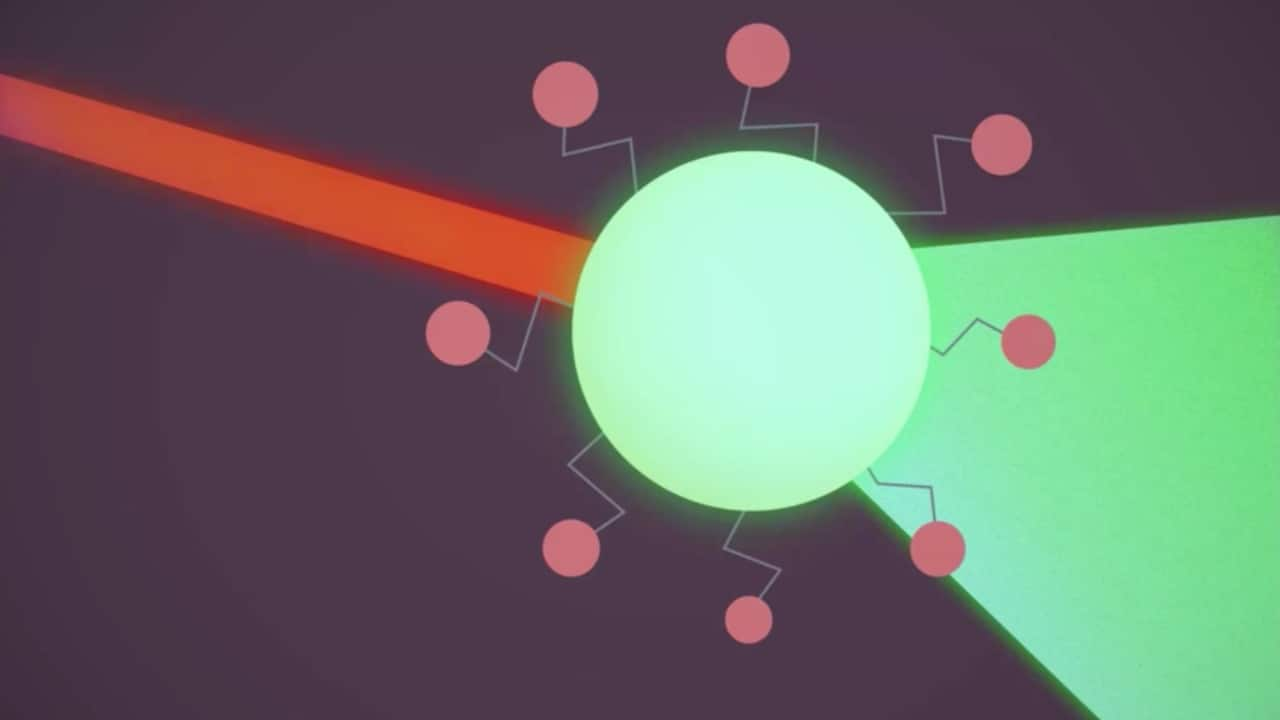It’s straight out of a science-fiction movie. The ability to see things in infrared light is something that’s easy to associate with hardware, like a pair of night-vision goggles. But it may not be long before that’s possible with no hardware at all. Chinese researchers at the University of Science and Technology have injected really tiny nanoparticles into eyeballs of mice. These nanoparticles can interact with the retina — the back wall of the eye where light falls and is converted to a signal that can be processed by the brain. What they were hoping to do with the experiment was to give the mice “supervision” — and
they claim to have succeeded. It gets even better, though. The effect was temporary — wearing off roughly 10 weeks after the injection without causing any serious damage or side-effects. [caption id=“attachment_6175871” align=“alignnone” width=“1280”] What seeing infrared would look like. Image courtesy: Flickr[/caption] They’re calling the magical material “ocular injectable photoreceptor-binding upconversion nanoparticles”. The supervision given to the test mice opened up the range of things that were visible to them. While mice can normally see objects in the visible light of the spectrum (like us), the shot of nanoparticles tweaked their vision to also see things in the near-infrared spectrum. A series of tests showed that the mice were, in fact, able to see in both visible and infrared. The nanoparticles work by attaching to the cells on the retina and helping convert the infrared light into electric signals. Scientists pointed an infrared light right into the eyes of the mice to check if they might react. The pupils of the mice that were injected with the nanoparticles pupils contracted, but the other didn’t. And just like that, the mice were able to “see” infrared light that they naturally or otherwise couldn’t. [caption id=“attachment_6175851” align=“alignnone” width=“1280”]
 Graphical representation of the process in action when infrared light red reaches a photoreceptor cell light green circle, the nanoparticles pink circles convert the light into visible green light Image credit: Cell[/caption] The researchers say that human eyes are more sensitive but not remarkably different from those of mice. So there’s definitely a chance that this won’t stop at being just fantasy for humans — it could work in humans too in the near future! Everything around us in the world — people, food, cars, even ice cubes — can both absorb and give off infrared radiation as they exchange heat with the air or other things around them. Without having to carry around infrared-vision goggles or have your genes altered, this new technology looks all-the-more sweeter. No doubt, the research is also something with huge potential in the military. But there are also other applications. Scientists believe these nanoparticles could also help compensate for poor vision in humans with retinal problems. It is also a lot less invasive than conventional vision repair. What’s next, China? Bottled quick-heal juice?
Graphical representation of the process in action when infrared light red reaches a photoreceptor cell light green circle, the nanoparticles pink circles convert the light into visible green light Image credit: Cell[/caption] The researchers say that human eyes are more sensitive but not remarkably different from those of mice. So there’s definitely a chance that this won’t stop at being just fantasy for humans — it could work in humans too in the near future! Everything around us in the world — people, food, cars, even ice cubes — can both absorb and give off infrared radiation as they exchange heat with the air or other things around them. Without having to carry around infrared-vision goggles or have your genes altered, this new technology looks all-the-more sweeter. No doubt, the research is also something with huge potential in the military. But there are also other applications. Scientists believe these nanoparticles could also help compensate for poor vision in humans with retinal problems. It is also a lot less invasive than conventional vision repair. What’s next, China? Bottled quick-heal juice?
The effect was temporary in mice — wearing off 10 weeks after the shot without any side-effects.
Advertisement
End of Article


)
)
)
)
)
)
)
)
)



